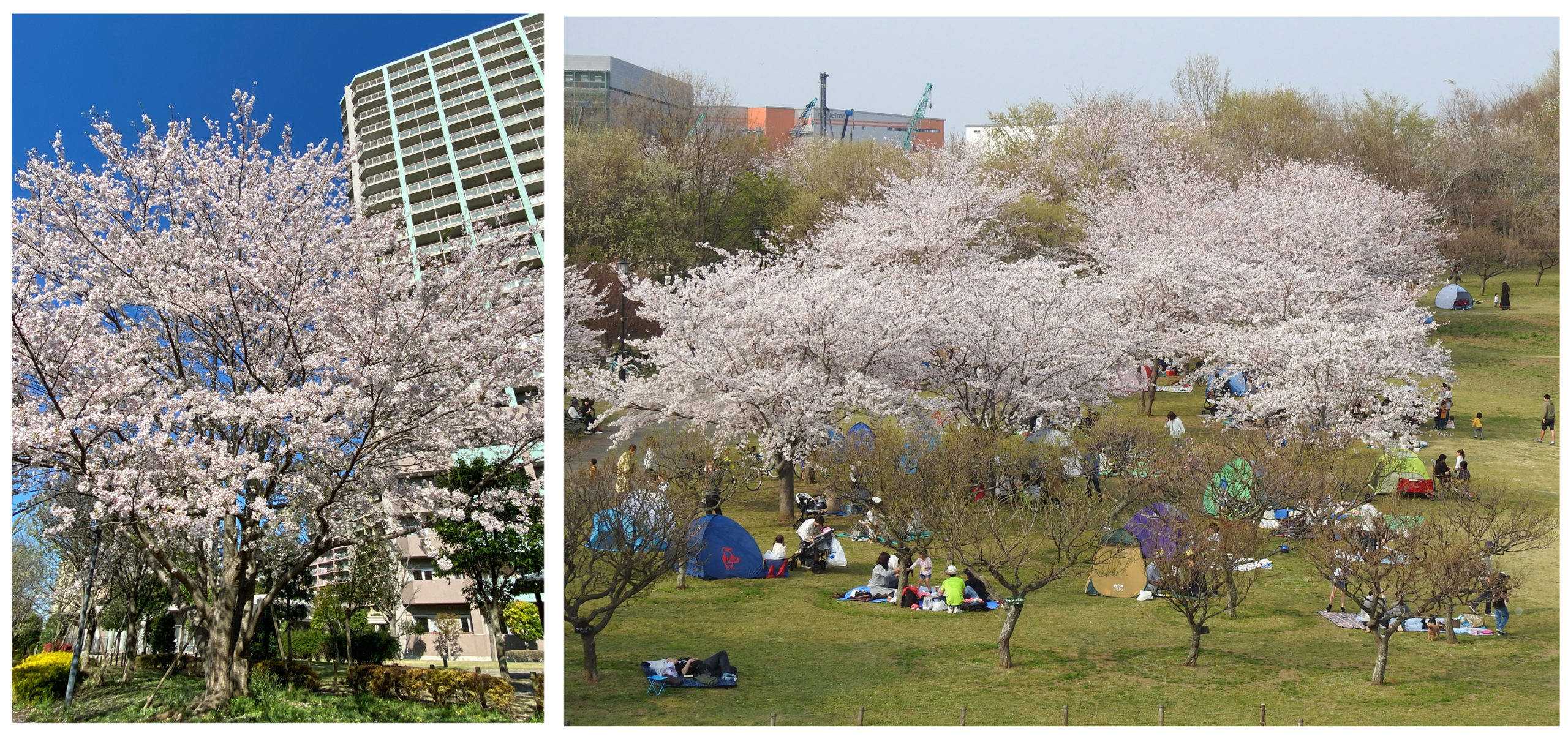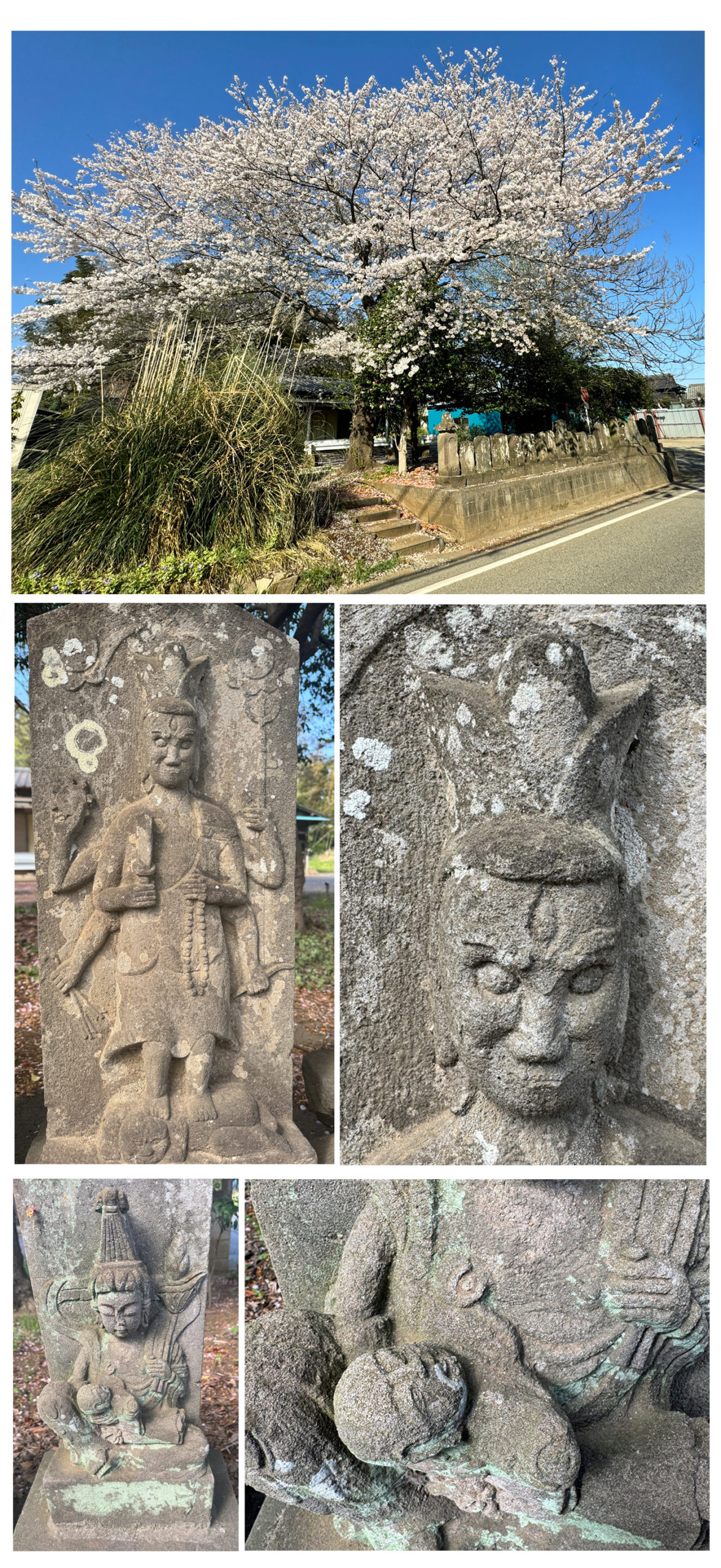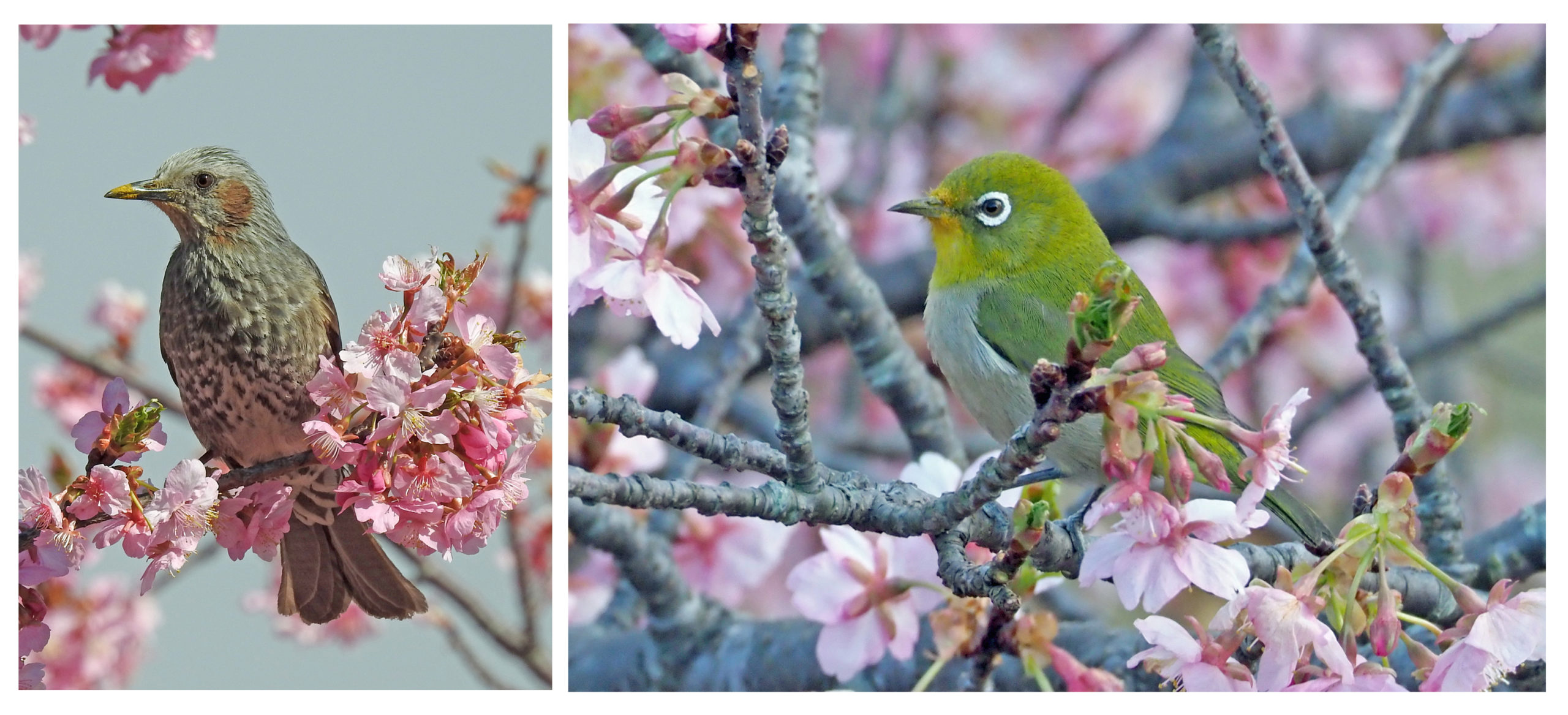According to the traditional Japanese almanac, cherry blossoms first open on Marach 25th. In central Tokyo the average opening date, determined by a particular tree at the Yasukuni Shrine, is March 24. This year the blossoms have been a little but late, and the Tokyo opening was not announced until March 29th. Out here in The Hokuso countryside we are just a few days behind.
This weekend, although a bit cloudy, is not forecast for rain, and looks to be the premier occasion for cherry blossom viewing throughout the southern Kanto. Expecting enormous crowds in the city, I choose to cruise around the Chiba NT housing complex and hit a few spots in the surrounding countryside on my trusty bike. Actually, the cherry trees along the NT streets were planted in the 1970s, and at around 50 years old have matured into their prime age for viewing.

Personally, I enjoy cherry trees planted alongside ancient temples and shrines, on lonely country roads, with moss-covered stone statues lined up beneath the branches. Fortunately, each village in the satoyama countryside has at least a guardian Shinto shrine, and often a small Buddhist temple or sanctuary as well. These are great spots to look for cherry trees.

When people imagine Japanese cherry trees the variety that immediately comes to mind is the Somei-Yoshino. This tree was developed in the late 19th century, in Somei Village, just north of modern day Komagome Station. This area was a hotbed for horticulture development, and the Somei-Yoshino variety has been genetically determined to come from a crossbreeding of two native species, the Edo Higan and the Oshima-zakura.
The flower is about 3~4cm wide, sometimes pure white, but often with a delicate pinkish tint. The basic variety has five petals, each with a shallow notch at the tip. Stamens are numerous, topped with tiny yellow anthers. The single pistil is a pretty shade of green, and the sepals are dull red. Flowers come into full bloom before the leaves develop, creating a solid mass of soft color that makes these trees enormously popular.
Somei-Yoshino cherries are not long-lived trees. They reach their flowering peak at about 50-60 years, then begin wilting soon afterwards. Almost all the trees planted to date are clones derived from a single parent, and in recent years there have been outbreaks of witches’ broom disease. As a result, the Somei-Yoshino are in some areas being replaced by a hardier ornamental variety, the Jindai-Akebono. This tree, which first appeared as a mutation in the Jindai Botanical Park, is resistant to witches’ broom disease. The flowers are similar with those of the Somei-Yoshino, but have a slightly stronger pinkish tint.

I recommend taking along a pair of binoculars when enjoying cherry trees. At this season insects are not that numerous, and cherry blossoms are often pollinated by birds. The two most active species are the brown-eared bulbul and the Japanese white-eye. Both with long bills that can reach deep into the flower. Sparrows, hampered with their short bills, get their share by cutting the flower off at its base, then licking up the nectar as it spills out.

